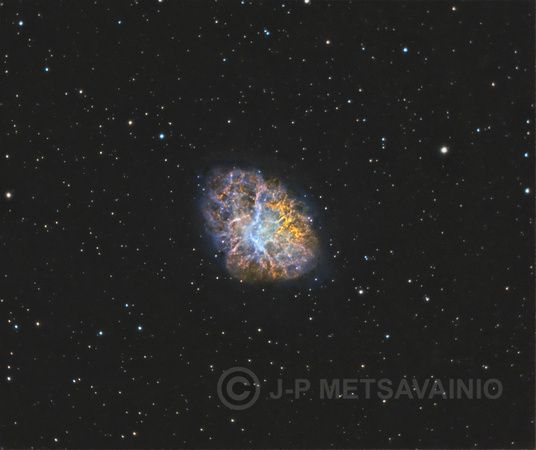M 1, the "Crab Nebula"
Nebula in HST-palette, Red=S-II, Green=H-a and Blue=O-III
The Crab Nebula supernova remnant locates in constellation Taurus. The actual, bright, supernova was seen by Chinese and Arab astronomers in 1054.
Distance from Earth is about 6500 light years and diameter of the nebula is about 11 light years. Supernova remnant expands at a rate of about 1500 kilometers/second.
Last night I shot S-II channel and, for the first time, broadband luminance to show the broadband component in the nebula. There is a, 30 rounds per second spinning, massive, very magnetic, neutron star in the core of the M 1. The hot plasma strikes existing gas, causing it glow in colors across the electromagnetic spectrum. Without broadband luminance, I can show only a part of the nebulas appearance.
Processing work flow:
Image acquisition, MaxiDL v5.07.
Stacked and calibrated in CCDStack.
Deconvolution with a CCDSharp, 30 iterations.
Levels, curves and color combine in PS CS3.
Broadband data is mixed to a narrowband channels in PS.
Telescope, Meade LX200 GPS 12" @ f5
Camera, QHY9 Guiding, SXV-AO @ 3Hz
Image Scale, 0,75 arcseconds/pixel
Exposures H-alpha 15x1200s, binned 1x1
O-III 2x1200s binned 2x2
S-II 3x1200s binned 1x1
Broadband luminance with a Hutec LP filter 2x1200s binned 1x1+ 3x600s binned 2x2


